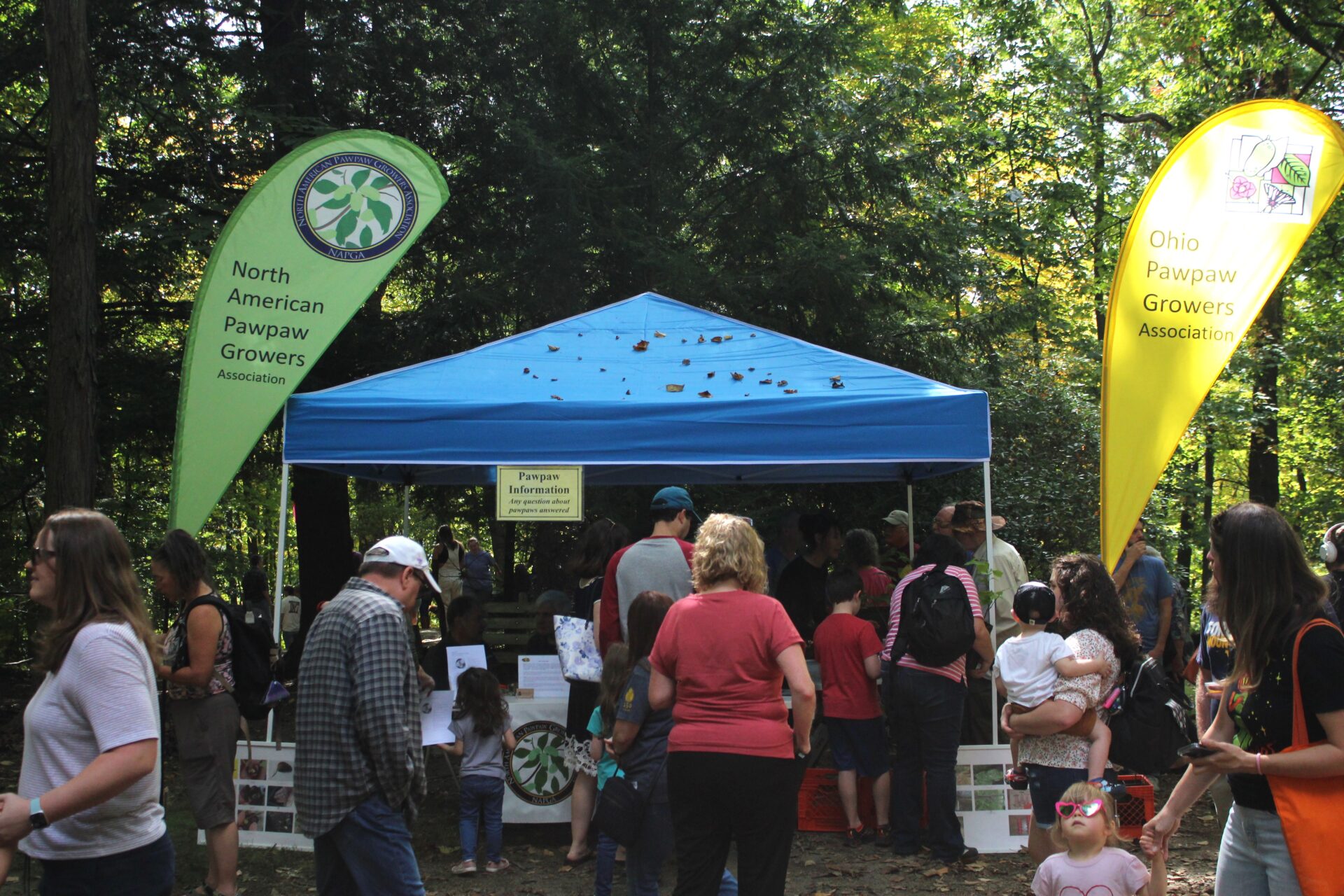For the past several years, on a warm autumn afternoon at the end of September, the parking lot of West Virginia University’s Coliseum fills with visitors. But they don’t come to watch basketball.
Sloping down from the Coliseum to the banks of the Monongahela River, the university’s Core Arboretum comprises about 100 acres of woodland. A space on campus dedicated to trees, it’s an ideal setting for the WVU PawPaw festival.
“It’s an event to celebrate the pawpaw fruit, which is the largest fruit native to North America, the largest fruit native to this region” Zach Fowler said. “And it’s a spectacularly delicious and actually quite common fruit that, for whatever reason, a lot of people these days have not eaten.”
Fowler is the director of the arboretum and the organizer of the festival. He said the pawpaw’s appeal isn’t in being exotic, but in being incredibly common.
“It’s not at all a rare tree, it’s just a lot of people haven’t eaten the fruit for whatever reason.” Fowler said. “It’s kind of important for people to understand that there’s this wonderful thing out there on the landscape that’s been growing here for 1000s of years.”
Free to the public, the festival’s biggest draw is the opportunity for newcomers and acolytes alike to try cultivated pawpaws, specifically those grown and developed by Neal Peterson. Peterson has dedicated decades to tracking down and creating named pawpaw varieties, selected for flavor and texture.
The samples of river-named pawpaws served at the festival: Shenandoah, Allegheny, Potomac and Wabashes, were all developed by Peterson. His bringing them to the festival is something of a full circle.
“Neil was a graduate student here in the 70s,” Fowler said. “Believe it or not, the first pawpaw that Neil had ever tasted, he tasted here at the arboretum down near the river in the wild growing pot balls that have been here for 1000s of years.”
Fowler said the festival is a product both for, and by, the community, and dozens of volunteers help to ensure attendants can taste the titular fruit. Despite cutting up dozens of pawpaws for others to try, student volunteer Dominic Moll has yet to try one himself.
“This is the Shenandoah,” Moll said as he raised a slice of pawpaw for his first taste.
He chewed for a moment, although the fruit’s soft texture offered very little resistance.
“It does taste kind of mango, it has like that mango texture with it,” Moll said. “It’s very sweet. And it’s actually it’s really nice.”
The festival draws people in from near and far, and Fowler says the furthest traveler he met Saturday was from upstate New York. Yoshi Henderson had a shorter drive, but still came down from Pittsburgh after discovering a pawpaw tree near his office just a week ago.
“Never heard of it, didn’t know there was like a tropical fruit native to the region,” he said “I’ve been on a mission to try it. And then I just found out that this was going on, so we drove down and finally got to try it. I’m super excited. Now, we’re going to plant a tree. And hopefully in a few years, maybe we’ll get some fruit out of it.”
Attendants could also listen to music, sample food made with pawpaws, buy their own trees and learn more about how to cultivate their own pawpaw.
Nick Elmore, a chemistry student from Martinsburg, also volunteered at the festival. He said he grew up with pawpaws and didn’t expect them to draw so much fanfare.
“There’s not really a festival for like bananas or other fruits, you know?” Elmore said. “The pawpaw I guess is like a cultural thing around here. They only grow in certain areas, and there’s even a town called Paw Paw, West Virginia. So it definitely is like a local thing that I guess we need to hold on to.”
Ultimately, Fowler said the fruit and the festival both are a great way to get people to interact with nature and the land’s history on a deeper level.
“I really love it as sort of this golden egg for connecting people to nature,” he said. “When I go down and I gather the fruit and bring them to the top of the hill it does give me chills sometimes to think about the ancient nature of this and how many times that people sit on this hillside and eat pawpaws through history and it really is a very exciting and interesting thing.”
